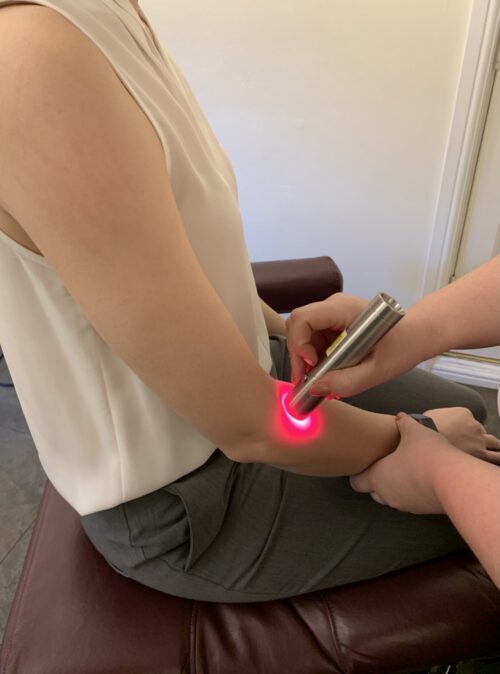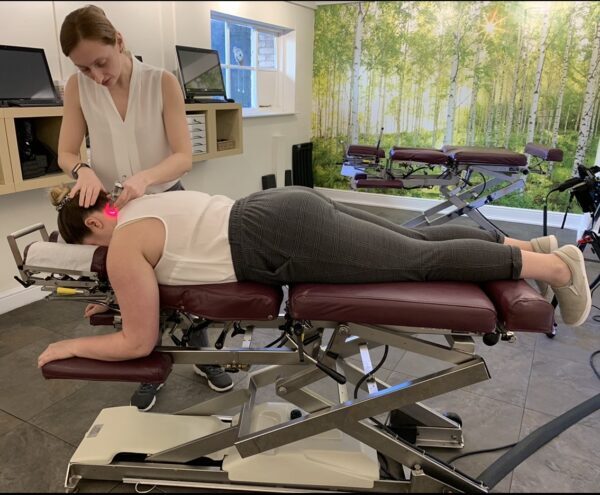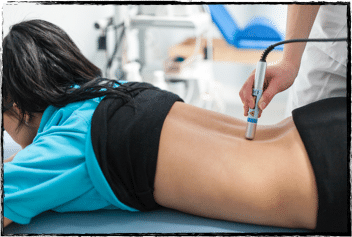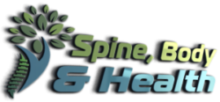Photobiomodulation (PBM Therapy)
Light at the End of the Tunnel?
Whether you’re suffering from acute or chronic pain including any type of musculoskeletal pain, there may be some light at the end of the tunnel…
The beneficial power of light and laser in treating a range of physical and psychological conditions has been known since the early 1900s. In the last several decades in particular, it has been applied in areas of medicine as diverse as treating depression and improving the condition of soft tissue injuries and wounds.
Of particular interest to us is the value of light therapy in reducing inflammation, inducing analgesia (pain relief), and promoting healing of musculoskeletal problems.
And, as light emitted diode (LED) has become more affordable in the past ten years or so, more people have been able to gain access to this type of therapy.
There is plenty of clinical evidence that light has the potential to treat many types of chronic pain…

Battling the chronic pain epidemic
Chronic pain is estimated to affect 43 percent of UK adults. Musculoskeletal pain is the number one reason for missing work or school.
While the most common method used to manage chronic pain is pain medication, people are increasingly looking for non-toxic alternatives to pill-popping.
NSAIDs, opioids, steroids, anticonvulsants, and surgery are all associated with numerous undesirable side effects.
With ageing populations and chronic pain and disease on a sharp increase (and predicted to continue), light therapy may have an important role to play in the future of pain treatment.
Light therapy for wound healing
Red to near-infrared (NIR) light, generated using low energy laser or light-emitting diode (LED) rays, and low level laser therapy (LLLT), have been shown to have a range of positive biological effects on injuries.
But precisely why it has benefits for wound healing is not well understood.
However, light has been used quite extensively for treating infected, ischaemic, and hypoxic wounds, as well as some other types of soft tissue injuries in both humans and animals.
For this reason, light may be considered a “phototherapeutic agent”.

In one Korean study published in 2015, red LED light was shown to aid wound healing and increase cell proliferation in fibroblast-like cells. The researchers concluded:
“These results suggest that 660 nm red LED might be a good source for phototherapy in wound healing medical treatments.”
In an opinion article in Frontiers in Physiology entitled “Low-level laser therapy as a treatment for chronic pain”, the authors observe:
“A systematic review and meta-analysis from 16 randomized control studies on LLLT and neck pain (Chow et al., 2009) interpreted the analysis that LLLT caused an immediate decrease in pain for acute neck pain and up to 22 weeks post in chronic neck pain patients. Recently, in a double blinded placebo control study Leal et al. (2014) reported a decrease pain and increase in function in patients with knee pain.”
While “chronic pain” is a broad and complex term and general conclusions should be avoided, the authors also note the following about neck pain:
“A meta-analysis by Gross et al. (2013) worked to separate out the effect of LLLT on a variety of different conditions. Based on their review, the effect of LLLT on chronic neck pain has a moderate level of evidence for effectiveness when using 830 or 940nm..”
LED vs. Laser Therapy
Some researchers believe that treatment with LED light produces different biological effects to treatment with laser.
One study published in 2017 compared the effects of both forms of light therapy: LLLT versus LED.
Their effects were measured on human cells using a wavelength of 660 nm; results were compared in terms of cell proliferation, production of reactive oxygen species within the cell and the rate of cell division.

“The findings indicated that the coherence properties of laser light provided more energy for the cells, and in a constant energy density, laser light created more oxidative stresses in comparison with LED light.”
Carefully supervised light therapy, when used alongside non-surgical reconstructive care, diet and exercise, may bring faster and longer-term relief to people suffering with acute and chronic physical pain.
As well as its low-risk (with very few adverse reactions reported), light therapy may help you reduce the amount of painkillers you’re taking and improve your quality of life faster than possible before.
Resources
Myung-Sun Kim et al. Effect of 660nm Light-Emitting Diode on the Wound Healing in Fibroblast-Like Cell Lines. International Journal of Photoenergy Volume 2015, Article ID 916838.
Derek Kingsleyet al. Low-level laser therapy as a treatment for chronic pain. Frontiers in Physiology 19th Aug 2015 doi: 10.3389/fphys.2014.0030
Naderi MS, Razzaghi M, Esmaeeli Djavid G, Hajebrahimi Z. A comparative study of 660 nm low-level laser and light emitted diode in proliferative effects of fibroblast cells. J Lasers Med Sci. 2017;8(Suppl 1):S46-S50. doi:10.15171/jlms.2017.s9.
Howard B Cotler, Roberta T Chow, Michael R Hamblin & James Carroll The Use of Low Level Laser Therapy (LLLT) For Musculoskeletal Pain MOJ Orthop Rheumatol. 2015 ; 2(5): . doi:10.15406/mojor.2015.02.00068.
Fayaz A, Croft P, Langford RM, et al Prevalence of chronic pain in the UK: a systematic review and meta-analysis of population studies. BMJ Open 2016;6:e010364. doi: 10.1136/bmjopen-2015-010364
Cidral-Filho, F. J., Mazzardo-Martins, L., Martins, D. F., and Santos, A. R. S. (2014). Light-emitting diode therapy induces analgesia in a mouse model of postoperative pain through activation of peripheral opioid receptors and the L-arginine/nitric oxide pathway. Lasers Med. Sci. 29, 695–702. doi: 10.1007/s10103-013-1385-3
Book Your Consultation Today:
Save 77% OFF Your Consultation
Book Today To Save Disappointment
It’s super simple to book your no obligation consultation
Find the true cause of your pain, and discover how you can reduce it
Days and times available to suit you and your life
We give you the tools you need to get your health back & live a pain free life!
© Copyright 2021 Spine, Body & Health. All Rights Reserved.
© Copyright 2023 Spine, Body & Health. All Rights Reserved.
